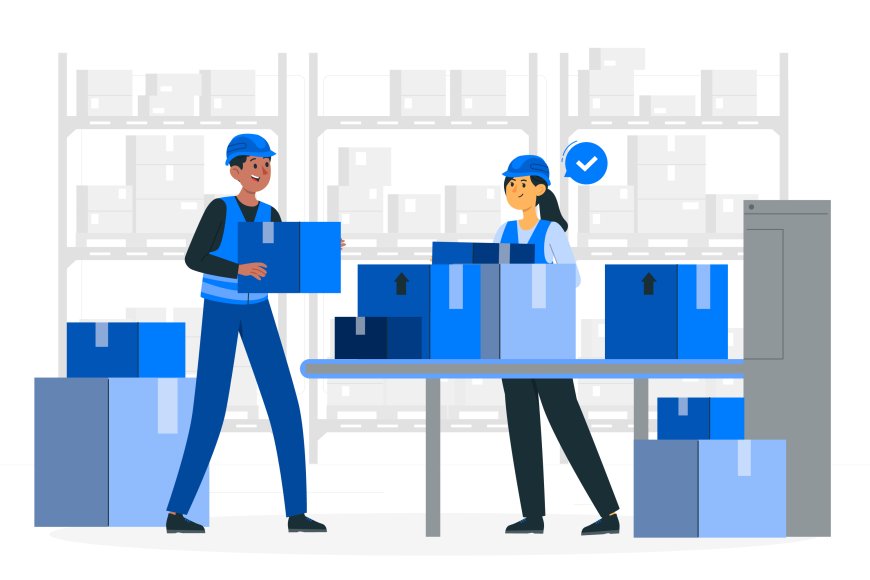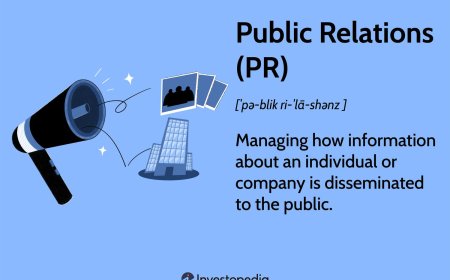The Role of Technology in Modern Dangerous Goods Handling
In today’s fast-paced global supply chain, the movement of hazardous materials is not only inevitable but critical to various sectors, including manufacturing, healthcare, energy, and chemical industries. However, dangerous goods handling requires utmost precision, compliance, and safety—factors that are now being revolutionized by technology. The digital transformation in logistics and warehousing has ushered in new tools, systems, and platforms that streamline the handling of hazardous substances while reducing human error and improving regulatory compliance. This blog explores how modern technologies are reshaping the landscape of dangerous goods handling, making operations safer, faster, and more efficient than ever before.

1. The Rising Need for Technological Integration
With the exponential growth in global trade, the volume of hazardous materials being transported and stored has surged. Manual processes once used in hazardous materials management are proving inadequate in addressing the complexity and compliance needs of today’s logistics networks.
Moreover, international regulations such as the IATA Dangerous Goods Regulations (DGR), the IMDG Code, and OSHA standards demand stringent documentation, labeling, and segregation protocols. Integrating advanced technology is no longer optional—it’s a necessity to ensure DG (Dangerous Goods) compliance across air, sea, and road transportation.
2. Automation: Enhancing Accuracy and Reducing Human Error
One of the most impactful innovations in the field of dangerous goods handling is automation. Automated systems now play a vital role in labeling, documentation, inventory management, and segregation of incompatible materials. These systems reduce the margin for human error, which has historically been a major contributor to accidents and non-compliance.
Robotic Process Automation (RPA) is increasingly used to process paperwork and ensure compliance with DG regulations. For instance, automated labeling systems verify that each package is correctly marked with hazard symbols, UN numbers, and emergency contact details—essential for transport safety.
3. IoT and Real-Time Monitoring for Risk Mitigation
The Internet of Things (IoT) has significantly advanced logistics safety and oversight in dangerous goods transport. IoT-enabled sensors are now commonly used to monitor real-time conditions such as temperature, pressure, vibration, and humidity, all of which can critically affect the stability of hazardous goods.
For example, during the transport of flammable liquids or compressed gases, even slight deviations in temperature can lead to disaster. IoT systems send instant alerts when thresholds are crossed, allowing immediate corrective action and preventing catastrophic incidents.
Furthermore, GPS-enabled trackers provide continuous location updates, enabling complete visibility of DG cargo during transit and aiding in theft prevention and emergency response.
4. Blockchain Technology for Transparent and Secure Documentation
Blockchain, known for its application in finance, is making significant inroads into dangerous goods logistics. Its ability to provide a decentralized, tamper-proof ledger ensures that every stakeholder in the supply chain can access accurate and real-time data about the movement of hazardous materials.
From manufacturers to freight forwarders to customs authorities, blockchain enhances trust and transparency. This is especially crucial for managing DG documentation like Safety Data Sheets (SDS), shipping declarations, and compliance checklists. Once stored on the blockchain, these documents become immutable and auditable, significantly reducing the risk of forgery or loss.
5. AI-Powered Risk Assessment and Compliance Management
Artificial Intelligence (AI) is transforming how companies assess risk in dangerous goods handling. By analyzing historical data, shipment records, and real-time inputs, AI tools can predict potential hazards, suggest best practices, and even alert users to non-compliant packaging or routing decisions.
AI also powers smart compliance tools that automatically update regulatory changes across multiple jurisdictions, helping logistics managers stay ahead of evolving international and local laws. This reduces the administrative burden and ensures safer operations, especially in complex cross-border supply chains.
Moreover, AI-enabled chatbots and virtual assistants help DG professionals navigate documentation and training resources, making critical information more accessible.
6. Augmented Reality and Training for Workforce Safety
Training remains a core element of hazardous materials handling. Augmented Reality (AR) and Virtual Reality (VR) tools have emerged as powerful methods for training personnel involved in packing, labeling, and transporting dangerous goods.
These immersive technologies simulate real-world handling scenarios, allowing employees to practice emergency response, proper use of PPE, and compliance procedures without actual exposure to hazardous substances. This significantly enhances learning retention and minimizes on-site incidents caused by inadequate training.
As DG materials become more varied and regulations more complex, AR-based training systems ensure that workers are always prepared to handle them responsibly.
7. Warehouse Management Systems (WMS) Tailored for Dangerous Goods
Modern Warehouse Management Systems (WMS) are being customized to manage hazardous goods inventory efficiently. These systems enable proper segregation of incompatible chemicals, dynamic location assignment based on hazard class, and controlled access to restricted zones within a warehouse.
By integrating with other technologies like IoT sensors and AI analytics, WMS platforms provide end-to-end control over storage conditions and audit trails. This holistic approach ensures that all storage and retrieval processes comply with local and global DG regulations.
Furthermore, these systems support FIFO (First In First Out) inventory strategies and expiry monitoring, which are essential in managing the lifecycle of volatile substances.
8. Digital Twins and Simulation for Incident Planning
Another breakthrough innovation is the use of digital twin technology in DG operations. A digital twin is a virtual replica of a physical system—in this case, a warehouse, container, or entire logistics network. It allows logistics planners to simulate different scenarios, test emergency responses, and optimize routes without disrupting actual operations.
For dangerous goods, digital twins help in stress-testing systems against fire outbreaks, chemical spills, or transportation accidents. By identifying weak points in the supply chain, companies can preemptively make changes and improve their hazardous material safety protocols.
9. Future Outlook: Smart Regulations and Cross-Border Collaboration
As governments and organizations increasingly prioritize safety and sustainability, the integration of smart technologies into dangerous goods handling will continue to evolve. Regulatory bodies are beginning to adopt digital platforms for licensing, audit submissions, and compliance tracking.
Cross-border data exchange initiatives are also gaining traction. For instance, customs authorities are now using AI and blockchain to scan and validate DG shipments, reducing clearance delays and improving global trade fluidity.
In the near future, we can expect fully autonomous transport vehicles, drone surveillance, and AI-led compliance engines to become standard in dangerous goods logistics.
Conclusion: Technology as the Cornerstone of Safe Dangerous Goods Handling
The modern handling of dangerous goods is no longer confined to traditional logistics practices. With the growing complexity and risk involved in transporting hazardous materials, technology plays an indispensable role in ensuring safety, compliance, and efficiency.
From automation and IoT to blockchain and AI, each innovation contributes to a more robust and secure supply chain. For organizations dealing with dangerous goods handling, investing in these technologies is not just a matter of operational advantage—it is a commitment to public safety and regulatory responsibility.
As the world continues to digitize, the future of hazardous materials management lies in proactive adoption of smart technologies that anticipate challenges and deliver scalable, sustainable solutions.


































